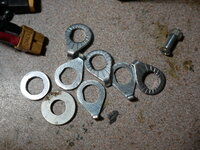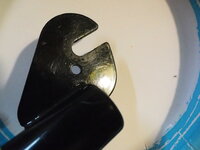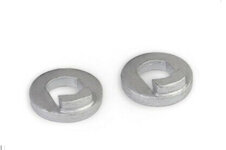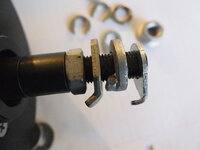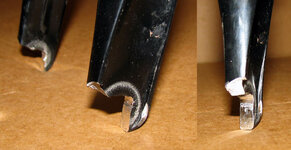Electricmover
New Member
- Region
- Europe
So I have gotten hold of this used bike and are going to make something out of it. I have been a tinker for quite some time.
Anyway the dropout looks superweird and I think the previous owner have welded on some adjuster metal-plates there to make his previous wheel fit or something.
Anyway, the axle of the fronthub is a lot thinner. Now, could I just put this fronthub on there and go ride the bike or do they have to be exactly the same? Axle and dropout. If you look at the third video below, after clamping on the bolts hard on both sides, to make it stick to the bike, the wheel actually spins pretty well and looks like it might work problem-free. Do you think I could just put a torque arm on to there as an extra safety and then get out biking with this thing?

 veed.io
veed.io

 veed.io
veed.io

 www.veed.io
www.veed.io
Anyway the dropout looks superweird and I think the previous owner have welded on some adjuster metal-plates there to make his previous wheel fit or something.
Anyway, the axle of the fronthub is a lot thinner. Now, could I just put this fronthub on there and go ride the bike or do they have to be exactly the same? Axle and dropout. If you look at the third video below, after clamping on the bolts hard on both sides, to make it stick to the bike, the wheel actually spins pretty well and looks like it might work problem-free. Do you think I could just put a torque arm on to there as an extra safety and then get out biking with this thing?

ow's Video - Nov 24, 2024

ow's Video - Nov 24, 2024

ow's Video - Nov 24, 2024
Last edited:

